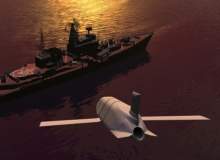
This contract announcement is latest stage in the joint-US Navy/Defense Advanced Projects Agency (DARPA) project, which was initiated in 2009. The main purpose of the LRASM programme is to deliver a new generation of anti-surface weapons for the US Navy, which can fly for longer and survive against increasingly sophisticated air defence systems.
The missile itself is based on Lockheed Martin‘s existing design for its AGM-158B JASSM-ER (Joint Air-to-Surface Standoff Missile – Extended Range) and has a range of more than 230 miles. But while the JASSM-ER is an air-launched weapon only, the LRASM will be capable of being both air-launched and sea-launched as well.
The end of last year saw three successful LRASM launches, two from a B-1B bomber and one from a MK-41 Vertical Launch System canister.
How well do you really know your competitors?
Access the most comprehensive Company Profiles on the market, powered by GlobalData. Save hours of research. Gain competitive edge.

Thank you!
Your download email will arrive shortly
Not ready to buy yet? Download a free sample
We are confident about the unique quality of our Company Profiles. However, we want you to make the most beneficial decision for your business, so we offer a free sample that you can download by submitting the below form
By GlobalDataFor the first time in 50 years, the US Navy’s MPRF is transitioning to a new aircraft type.
See Also:
Unlike existing anti-ship missiles, the LRASM can autonomously target vessels using on-board targeting systems developed by BAE Systems. This means the missile does not need to rely on precision intelligence or navigation aids like GPS or satellite data-links. This capability is seen as essential for the US military’s emerging anti-access/area-denial strategy in the Pacific, where nations such as China are building up significant area-denial capabilities.
However, the LRASM programme has not been without its problems. There were plans for a LRASM-B variant, which would be ramjet-powered. The missile was compared with the Indo-Russian PJ-10 BrahMos heavy strike missile but deemed too risky by DARPA and it was cancelled in 2012. Being a DARPA programme also means going from development-phase to fielding as a naval asset is not straightforward; it still has to be approved by the US Navy and a ‘yes’ is not definite.
There are also other missiles in the works that could steal LRASM’s thunder. Missile manufacturers Raytheon say its internally-funded Joint Stand-Off Weapons Extended Range (JSOW-ER) can offer comparable performance for one-third to one-fourth the price of an LRASM. Boeing, which manufacturers the US Navy’s current anti-ship missile the Harpoon, has developed the AGM-84K SLAM-ER that is a stealthier Harpoon variant.
More tests are due this year for LRASM and initial projections see the missile being fielded around 2015.
Follow Grant Turnbull on Google+


.gif)





